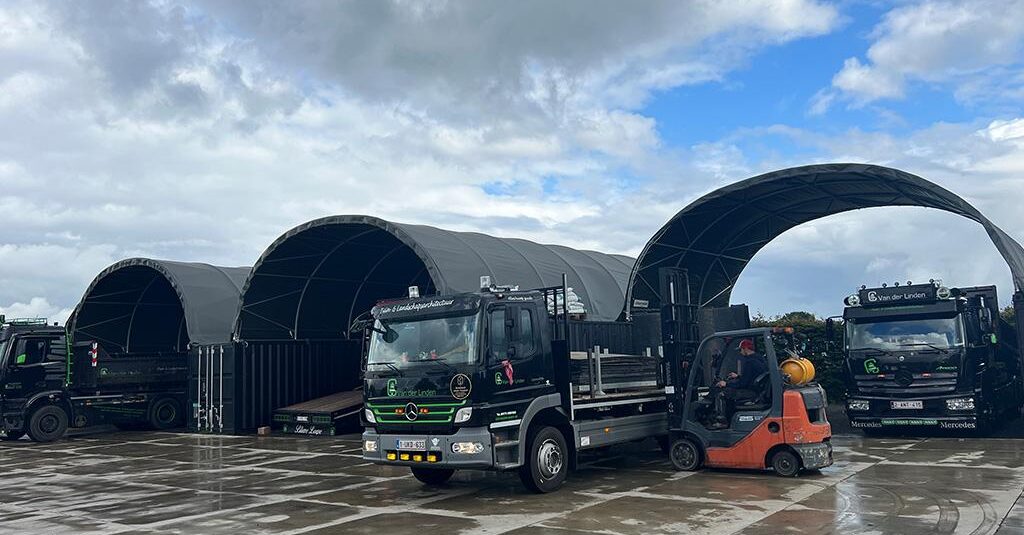Autre
Kroftman Shelters: Reliability Through Quality and Conformity
7 min temps de lecture

My name is Nicolette Lammers, and I have been working as a sales associate at Kroftman for over 13 years. Over the years, I have gained considerable knowledge about our storage solutions, including their pros and cons. In this blog, I will share with you more about the average lifespan of our container shelters. Much depends on how carefully you handle the shelter, how you maintain it, and where it's located. Sometimes things can go wrong. In that case, you may still be able to use our warranty. In this blog, I will cover the following topics:


For all our container shelters, you can choose between a PVC tarp with a thickness of 610 g/m² or a PE tarp (also known as polyester or HDPE) with a thickness of 300 g/m². The only exception is our budget model and smallest container shelter, the CT403. The CT403 comes standard with a PE tarp.
The PVC tarp is stronger than PE and therefore more resistant to weather conditions. The lifespan of PVC is longer. If you move your container shelter frequently, it will take its toll on both tarps. Assembling and disassembling, where the tarp is stretched over the structure, affects its quality. A more fragile tarp like PE will tear sooner. We offer a 10-year declining warranty on PVC and a 3-year warranty on PE.
Weather factors that have the most impact on the tarp are wind, snow, and heat:
The location also plays a role. A tarp at the coast, exposed to salty sea air, endures more than one in a sheltered inland location.
In summary, the following elements determine the lifespan of the tarp for a container shelter:
If your PVC tarp has tears, we offer a repair kit. This kit contains a piece of PVC about 1 m² and glue developed by Kroftman. This kind of repair is not possible for PE tarp. In case of damage to a PE tarp, it's better to replace it. Generally, you can expect a PVC tarp to last ten years and a PE tarp three years, which aligns with our warranty. By following these tips and maintaining your tarp properly, it will likely last longer. If you're unsure whether to choose PVC or PE tarp, read this blog.

The frame of the container shelter is made of galvanized metal. We offer a 10-year declining warranty against rust-through for the frame. However, you can expect the frame to last longer than ten years. Given the thickness of at least 1.5 mm and the fact that the metal is galvanized, the chance of rust-through is minimal. Regularly check if all the screws in the frame are tight, as you may need to tighten them occasionally. This helps maintain the structure's stability and reduces wear and tear. If a part of the frame breaks, contact me or my sales colleagues. Usually, you can order replacement parts for the container shelter from us.
In addition to the frame and tarp, a container shelter has other parts with a certain lifespan, such as:
We offer a 10-year declining warranty against rust-through on the steel frame of the container shelter. As mentioned earlier, the frame is expected to last longer than ten years. If you regularly check for loose screws and tighten them, your frame will remain stable for a long time. We offer a 3-year declining warranty on PE tarps. Tears in this type of tarp cannot be repaired, requiring a new tarp. We offer a 10-year declining warranty on PVC tarps, which can be repaired with our repair kit in case of tears or burn holes.
Additionally, we have had a static calculation done for all container shelters. A crucial part of this calculation is the maximum snow and wind load for our container shelters. On our website, under each container shelter, you can find the specifications for the product. The maximum allowable wind and snow load is also listed there. Our container shelters comply with Euro norm EN13782 (temporary construction), indicating they are of high quality and meet all standards, providing an extra level of assurance.

We hope this information helps you make an informed choice. If you'd like to know exactly how much the container shelter of your choice costs, you can fill out our quotation tool without obligation. This will generate a quotation that will be emailed to you, showing at a glance the transport costs for your container shelter. You can create multiple quotations and check different options to compare them.
Still have questions? We're here to help you.